
views
X
Trustworthy Source
Mayo Clinic
Educational website from one of the world's leading hospitals
Go to source
Recognizing Constipation in a Child
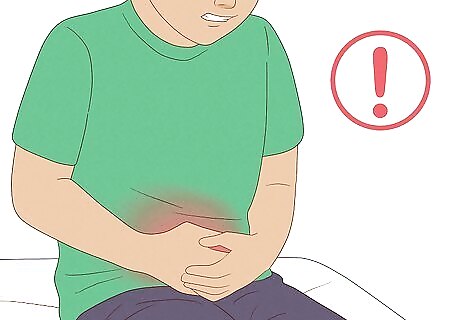
Identify symptoms of constipation. Children who are constipated may try to not have bowel movements if doing so causes pain. They may tighten their buttocks and contort their bodies in an effort to prevent having a bowel movement. Your child may be constipated if he or she: Has difficulty passing stool Passes hard, dry stool with or without blood on it Passes stool less than three times per week Has pain while passing stool Is nauseous Has abdominal pain Passes small amounts of liquid or clay-like stool. You may find this also in the child’s underwear.
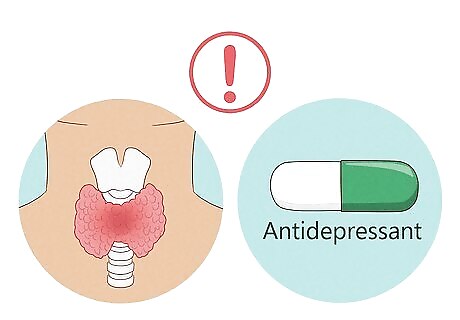
Recognizing if your child is at risk of constipation. Children in certain situations may be more likely to become constipated. These include: Not engaging in regular physical activity Eating a low fiber diet Frequent dehydration Taking medications that increase the risk of constipation, such as some antidepressants Having a medical problem with the anus or rectum Having family members are also prone to constipation Having neurological problems, such as cerebral palsy Having emotional issues or new causes of stress Having an underactive thyroid or other metabolic problem
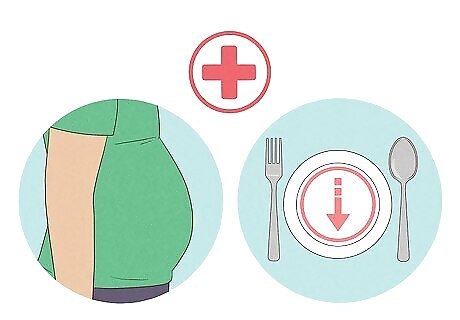
See a doctor if your child has symptoms that suggest that the condition may be more serious. Most of the time, constipation does not develop complications or indicate a more serious problem. Signs of complications and serious problems include: Fever Vomiting Bloody stools A distended abdomen Weight loss Areas where the skin around the anus has ripped open A rectal prolapse, in which the intestines are coming out of the anus Frequent or painful urination, which can be a sign of a urinary tract infection. This is common in children with constipation. Poor appetite. Severe or constant abdominal pain.
Easing Constipation with Lifestyle Changes and Home Remedies
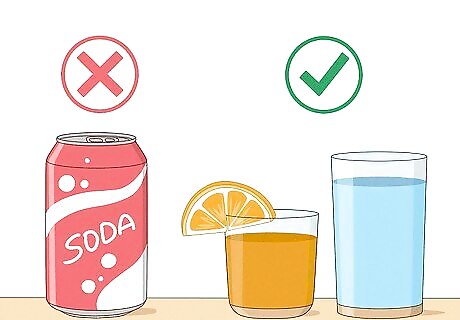
Give your child plenty of liquids. This will help soften the stool and make it easier to pass. Water and juices are excellent for this purpose. Milk may cause constipation in some children. Avoid giving your child caffeinated drinks like tea and coke. The amount of water children need varies based on age, activity levels, and the climates in which they live. However, if your child is tired and passes cloudy or dark urine, this indicates that he or he is dehydrated.
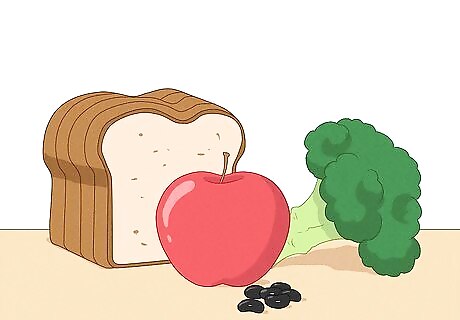
Provide a high-fiber diet. Fiber will help your child produce soft stools that are easy to pass. High fiber foods include beans, whole grain breads, fruits and vegetables. The following are recommended amounts of fiber for children: Approximately 20 g of fiber per day for young children About 29 g per day for teenage girls Roughly 38 g per day for teenage boys
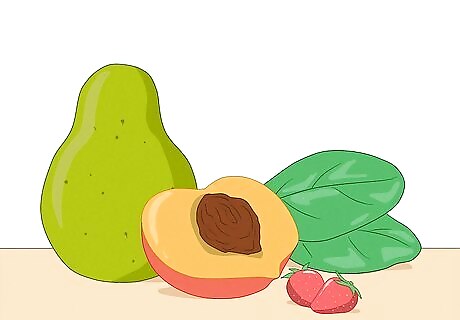
Try giving your child foods that may have slight laxative effects and are high in fiber. Most are rich fruits that your child will probably readily enjoy: Prunes Peaches Pears Plums Apples Apricots Raspberries Strawberries Beans Peas Spinach
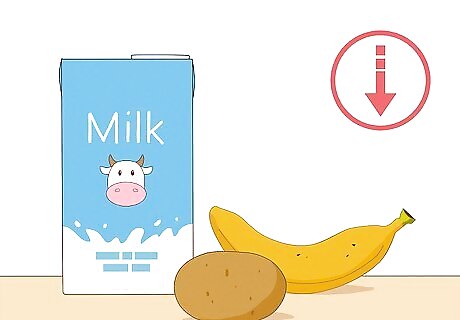
Reduce your child’s intake of foods that may cause constipation. These include: Milk and dairy products for some children Carrots, squash, potatoes, bananas, and other foods with a high starch content Highly processed foods that are high in fat, sugar, and salt, but low in fiber will also increase a child's tendency to become constipated. Those foods will make the child feel full and they are likely to pass up other, healthier, high-fiber foods.
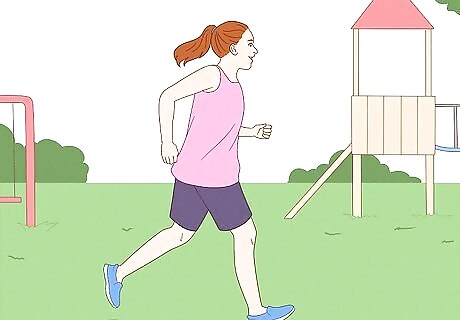
Give your child the opportunity to engage in physical exercise. This will help stimulate bowel movements. Activities include: Taking your child to a playground to run around Encouraging bike riding Going swimming
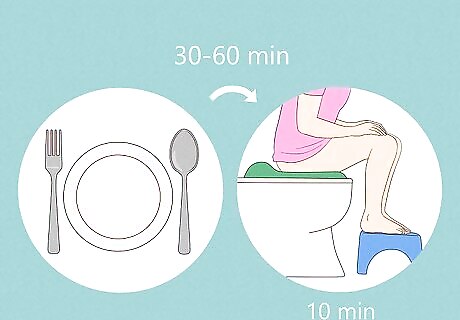
Create a routine for your child to try to have bowel movements. Suggest that your child sit on the toilet for at least 10 minutes approximately 30-60 minutes after each meal and try to have a bowel movement. You can pair this with relaxation techniques that may reduce your child’s anxiety about having painful bowel movements. Use deep breathing to help your child concentrate on relaxing his or her muscles. Have your child imagine relaxing images or a bowel movement that isn’t painful. Gently massage your child’s belly before he or she tries to have a bowel movement Be supportive and reward your child for trying. You can give a small reward such as stickers or playing his or her favorite game. Provide a stool so that your child’s knees are above his or her hips. This may make the bowel movement easier.
Consulting a Doctor
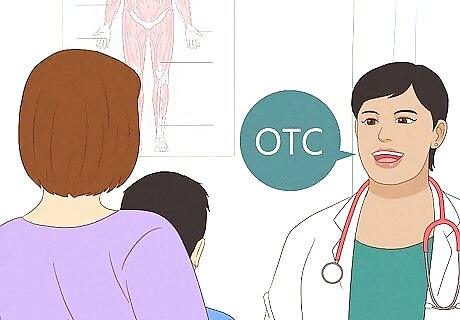
Ask your doctor about giving your child over-the-counter medications to soften stool. Fiber supplements or stool softeners may make it less painful to have bowel movements. Though they are available over the counter, it is best to consult a doctor before giving them to a child. The doctor will recommend a dosage that is tailored to your child’s age and weight. Common fiber supplements are Metamucil and Citrucel. These work best when your child also drinks at least a liter of water per day. Glycerin suppositories may also help when used occasionally.
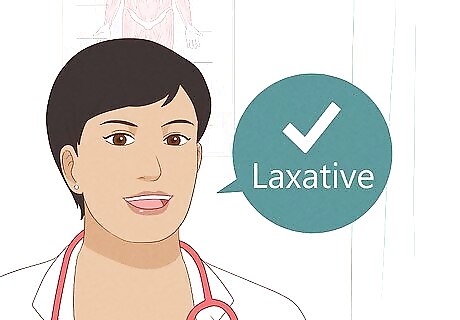
Do not give laxatives without first consulting your child's doctor. If feces are blocking the intestines, it may be necessary to give the child something stronger to force it to pass, but this should be supervised by a doctor. There are a few different kinds of laxatives, including: A home remedy of mineral oil Bulk-forming laxatives (Ispaghula husk, Methylcellulose, Sterculia) which cause the body to retain fluid and form wetter stools Osmotic laxatives (Lactulose, Macrogols, MiraLax) which help the body pass stool by putting more liquid in the bowels Stimulant laxatives (Senna, Bisacodyl, Sodium Picosulphate). These are used when the stools are soft enough to pass but your child’s body isn’t passing them. These medications stimulate the muscles in the digestive tract to contract and push waste along towards the end. They are generally a last resort for treating constipation in children and used only short term in most cases.
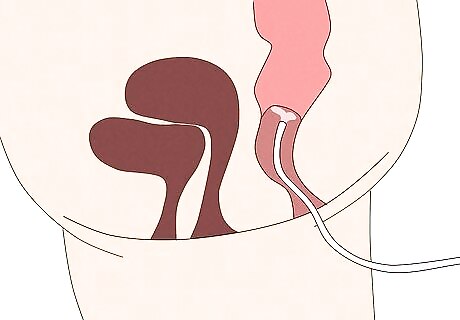
Treat fecal impaction. If hard, dry stool has collected in the rectum, it may be necessary to do an enema or use a suppository to clear it out. These should only be done by the doctor or following a doctor's instructions. A suppository is medication that is inserted in capsule form into the anus where it dissolves and is absorbed. Bisacodyl and Glycerine are often given as a suppository. An enema is medication in fluid form that is introduced into the large intestines via the anus. This is usually the most effective way to quickly clear out impacted stool.















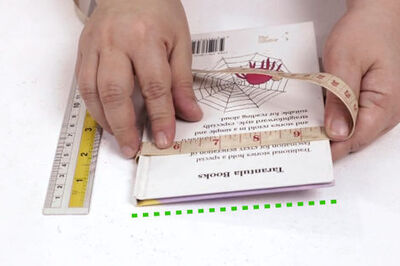


Comments
0 comment